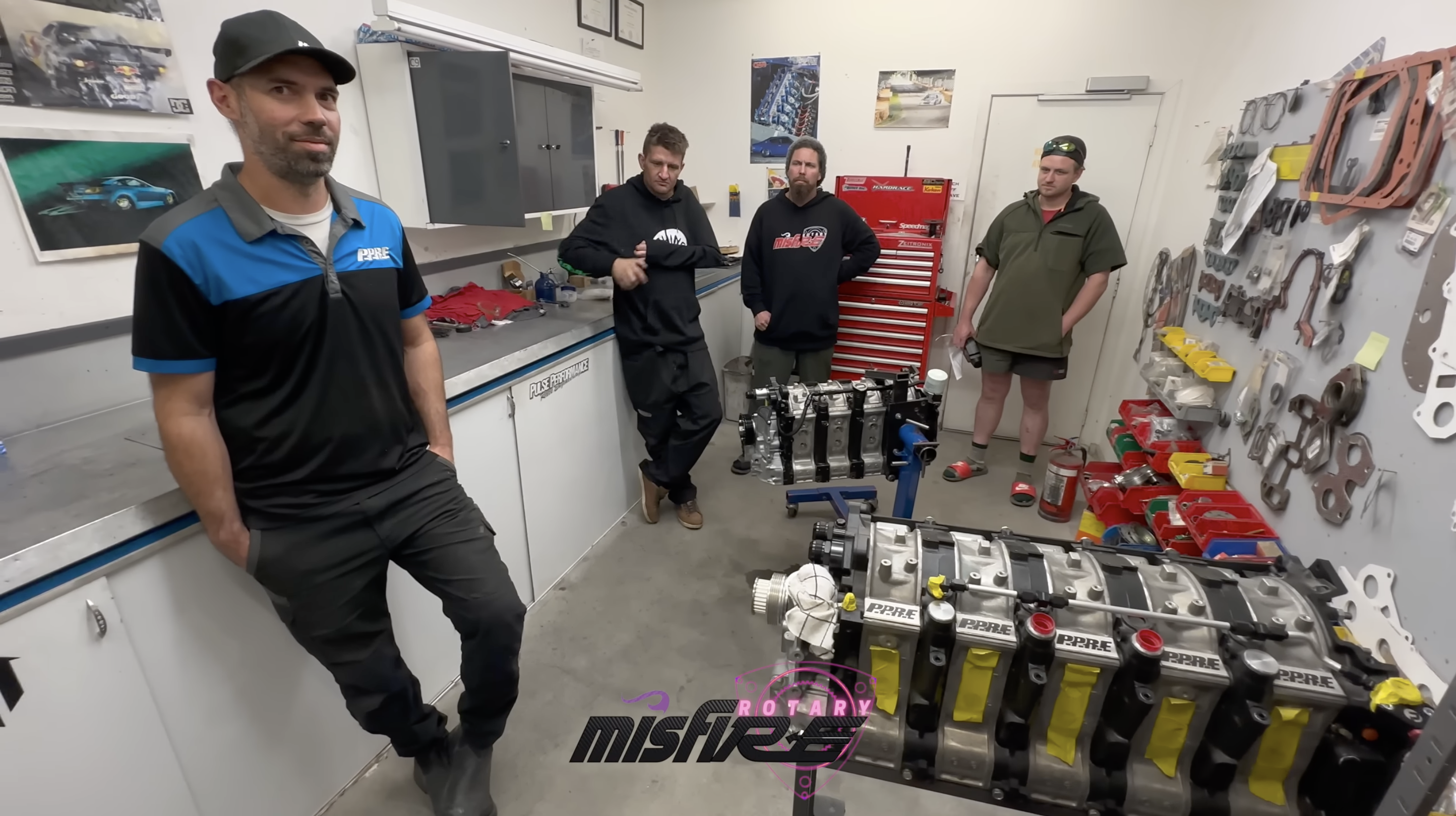The World's First Five-Rotor Engine: A Deep Dive with PPRE

In a nondescript building surrounded by school fields and footy pitches, something extraordinary is happening. This is the home of PPRE, one of the world's most renowned rotary performance shops, and they're working on what could be the world's first five-rotor engine.
The team at PPRE are tight-lipped about the details, especially when it comes to what car this revolutionary engine will power. "Something that hasn't been done before," is all they're willing to reveal. But the five-rotor isn't their only groundbreaking project. The shop is also the birthplace of the world's first six-rotor engine, and they've built dozens of four-rotors, each more impressive than the last.

The five-rotor engine is a marvel of engineering, featuring a dry sump and an external oiling system. It's set to join its four-rotor siblings, which run a more conventional wet sump system. When asked about the performance numbers, the team is cautious but optimistic. They believe that the engine's unique design, coupled with high-flow intakes and possibly three turbos, could yield impressive results.
One of the most intriguing aspects of these engines is the use of billet plates. While they haven't undergone extensive testing yet, the team has focused on optimising the cooling system, with three different circulation points to ensure the engine runs as efficiently as possible.

The thirst of these engines is not to be underestimated. During its first run, the five-rotor guzzled a 205-liter drum of fuel alarmingly quickly. As for horsepower, while the numbers are still speculative, the team suggests that a four-rotor engine could easily achieve around 2,000 horsepower. The five-rotor, with its unique sound and performance characteristics, is expected to push those boundaries even further.
So, why go for a five-rotor when a four-rotor can already achieve so much? According to PPRE, it's all about the "difference" and the unique sound it will produce. It's an experiment, a challenge, and a testament to what can be achieved when engineering brilliance meets a passion for pushing the limits.

It's hard not to be awed by what this small, unassuming shop in New Zealand is achieving. They're not just building engines; they're pushing the boundaries of what's possible in automotive engineering. And the world can't wait to see what they come up with next.
Stay tuned for more updates on this groundbreaking project, and in the meantime, keep those rotors spinning!
Comments
No posts found










